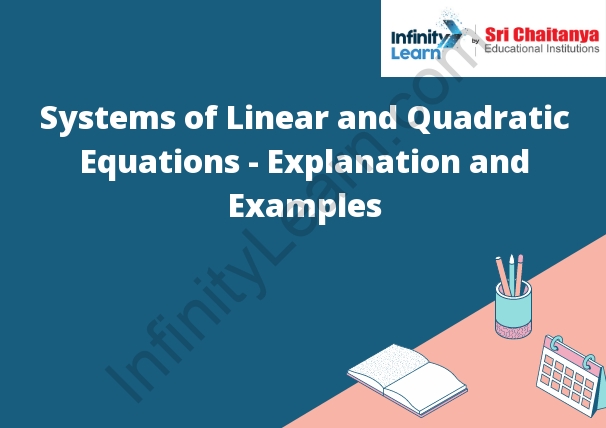Table of Contents
Linear Quadratic Systems
A linear quadratic system is a mathematical system consisting of two linear equations and two unknown variables. The system can be solved for the unknown variables using a variety of methods, including algebraic methods or numerical methods.
The two linear equations in a linear quadratic system are typically expressed in the form of a matrix and a vector. The matrix consists of the coefficients of the linear equations, and the vector consists of the constants of the linear equations. The two unknown variables are typically represented by the symbols x and y.
The two linear equations in a linear quadratic system can be solved algebraically by manipulating the matrix and vector to produce a simplified equation. This equation can then be solved using standard algebraic methods. Alternatively, the two linear equations can be solved numerically by solving a set of simultaneous equations.

Examples of Linear Equation and Quadratic Equation
Linear equation is an equation in which the highest power of the variable is one. Quadratic equation is an equation in which the highest power of the variable is two.
An example of a linear equation is y = 2x. An example of a quadratic equation is y = x2.
Solving Linear-Quadratic Systems by Gaussian Elimination
The Gaussian elimination algorithm is a method for solving a linear-quadratic system of equations. The algorithm works by reducing the system to row echelon form, and then solving the system of equations in that form.
The algorithm begins by arranging the equations in matrix form, with the coefficients of the equations listed in descending order of magnitude. The matrix then is reduced to row echelon form by performing the following steps:
1. Eliminate all zero rows.
2. Rearrange the rows so that the first nonzero entry in each row is in the leftmost column.
3. Eliminate all entries in the leftmost column that are multiples of the first nonzero entry in that column.
4. Convert the matrix to reduced row echelon form.
The following example illustrates how the Gaussian elimination algorithm works.
Example:
Solve the linear-quadratic system of equations:
3x – y = 5
2x + 3y = 8
The matrix of the equations is:
3 -1 2
2 1 3
The first step in reducing the matrix to row echelon form is to eliminate the zero rows. There are two zero rows, the first and the fourth. This is done by subtracting the first row from the second row, and the third row from the fourth row.




